Want to check out our tractor maintenance videos? Click here to see what we've got!
Steve,
I have stripped and cleaned the 23C which we have. When I removed the first sleeve I thought that I was seeing things. The bottom control oil ring was missing. Upon the removal of all the pistons it appears that somebody has re-ringed this unit previously, and left of the bottom oil control ring on all pistons.
The evidence of carbon was really thick around the valve stems and down the side of the cylinder liner. I had to actually hone the block before refitting the sleeves to relieve the carbon deposit.
Have you ever come across this before? The unit in general appears to have been well looked after apart from that. All the panels are straight and there is very little corrosion on any thing. I have not removed the pump but had the injectors overhauled before I dismantled it. When you opened the throttle under no load it blew copious amounts of smoke which I thought would be the injectors. This made no noticeable difference to the engine at all. I think there was a compression problem as well as being hard to start. I intend to put it back together and see if it starts OK. If not I will have the pump done up. I have also overhauled the cylinder head and done the modification to the injection spray area. Hers hoping all goes well.
Thank you for the video which I can now look at as I progress along.
Regards
Greg Ford
Hi Greg,
Pleased to hear that you’ve got started on the engine.
The original pistons were only fitted with 4 rings. The top ring should be a chromium plated compression ring and the next 2 rings are tapered compression rings (should be marked ‘T’ for top on one side of them. Next is an oil ring which is fitted to the groove above the gudgeon pin. On the original assembly there was no ring fitted to the bottom groove (below the gudgeon pin) – so it looks like you could have the original pistons and rings in your engine.
I would check the rings (in their grooves) using a feeler guage and compare them to the tollerances which are given in the DVD. To be correct, the ring end gaps should be assessed in a proper ring guage (special tool MF185) for accuracy. Measuring ring end gaps with the rings placed inside a liner is a second best alternative to using MF185, as the liners can obviously vary in their level of wear and even new liners are only manufactured to within limits which may give inaccurate ring gap readings.
Most of the replacement piston/ring kits that are available for the 23C engine have another oil ring to fit into the 5th groove (below the gudgeon pin). If you need to source new pistons/rings I would fit the 5th ring if they have been supplied by the manufacturer.
I hope that the work on the engine solves all the problems and that you don’t need the injection pump looking at (always an expensive job).
Thanks for updating me with your progress. All very interesting stuff. Can’t wait to hear what happens when you get her all back together.
Regards,
Steve.
Steve,
I have got my 23C running in the frame from re-assembly. It makes a difference when you set the timing correctly as per your video. Pump timing was out about 10 degrees although scribe mark was lined up on outer gear case.
When I dismantled this engine it had no slow rotors on any of the valve stems. Is this normal or do all of these engines have slow rotors fitted from the factory. Upon dismantling I can see that the unit has been pulled apart before due to the presence of heaps of “blue” gasket silastic material.
Thank you agin for your info & great help.
Kind regardsGreg
Glad to hear that you have got the engine running again and that adjusting the timing has had a positive effect.
The 23C should have valve stem caps on all the stems – both inlet and outlet. There should be larger caps on the exhaust valves and smaller caps on the inlet valves.
Steve.

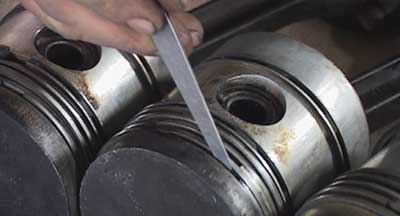
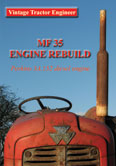
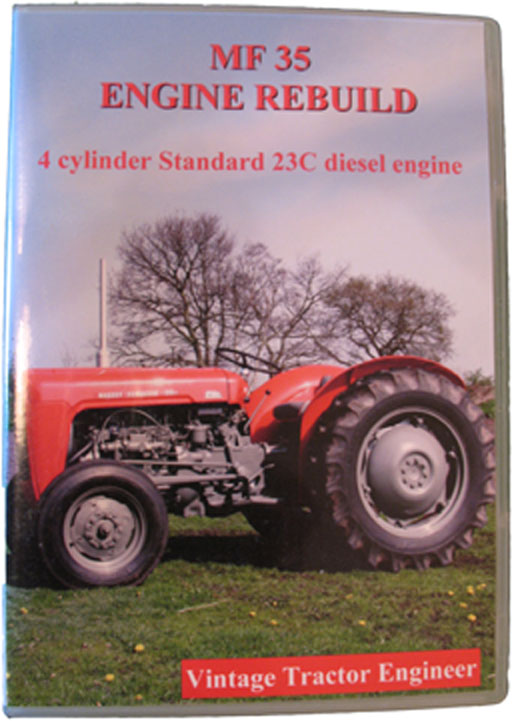
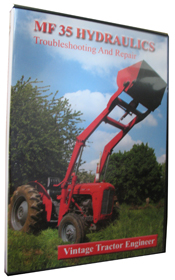
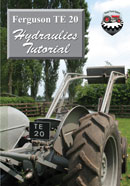
Q/Steve.
Why do you think this 5th oil ring was not fitted to the standard tractor but was on the industrial model?
Steve,
I have also got my 23c in bits after getting very spanner happy. I too noticed the 5th control ring to be missing and also no valve stem seals.is this engine supposed to come with these seal?
Adam